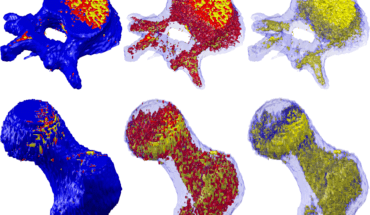A tiny fish is helping scientists understand how the human brain processes sound, while also giving insight to autism spectrum disorder.
Scientists at The University of Queensland used zebrafish that carry the same genetic mutations as humans with Fragile X syndrome and autism, and discovered the neural networks and pathways that produce the hypersensitivities to sound in both species.
The discovery was reported by the Queensland Brain Institute’s Associate Professor Ethan Scott and Dr Lena Constantin.
“Loud noises often cause sensory overload and anxiety in people with autism and Fragile X syndrome – sensitivity to sound is common to both conditions,” said Dr Constantin (pictured).
 “We think the brain is transmitting more auditory information because it is not being filtered and adjusted as normal.
“We think the brain is transmitting more auditory information because it is not being filtered and adjusted as normal.
“Half of males and one fifth of females with Fragile X syndrome also meet the diagnostic criteria for autism spectrum disorder.”
Dr Gilles Vanwalleghem and Rebecca Poulsen were part of the team that studied how zebrafish make sense of their world, in order to explore how neurons work together to process information.
“Fragile X syndrome is caused by the disruption of one gene, so we can disrupt that single gene in zebrafish and see the effects,” Dr Vanwalleghem said.
“We are able to study the whole brain of the zebrafish larvae under the microscope and see the activity of each brain cell individually.”
Dr Constantin said the team recorded the brain activity of zebrafish larvae whilst showing them movies or exposing them to bursts of sound.
“The movies simulate movement or predators —the reaction to these visual stimuli was the same for fish with Fragile X mutations, and those without,” Dr Constantin said.
“But when we gave the fish a burst of white noise, there was a dramatic difference in the brain activity in Fragile X model fish.”
After seeing how the noise radically affected the fish brain, the team designed a range of 12 different volumes of sound and found the Fragile X model fish could hear much quieter volumes than the control fish.
“The fish with Fragile X mutations had more connections between different regions of their brain and their responses to the sounds were more plentiful in the hindbrain and thalamus,” Dr Constantin said.
She said the thalamus worked as a control centre, relaying sensory information from around the body to different parts of the brain, while the hindbrain co-ordinated behavioural responses.
“How our neural pathways develop and respond to the stimulation of our senses gives us insights into which parts of the brain are used and how sensory information is processed,” Dr Constantin said.
“Using the zebrafish, we’ve been able to see a lot more detail and for the first time, seen more activity in the hindbrain which we’re keen to explore further.
“We hope that by discovering fundamental information about how the brain processes sound, we will gain further insights into the sensory difficulties faced by people with Fragile X syndrome and autism.”
This research was published in BMC Biology and funded by the Simons Foundation Autism Research Initiative, National Health and Medical Research Council and Australian Research Council.
Read more in The Brain magazine: Using a zebrafish to understand the whole brain
Above: Dr Constantin … exploring how neurons work together to process information.
- Gut microbiome could delay onset of type 1 diabetes - 3rd April 2025
- The da Vinci 5 Robot Is Set To Transform Bariatric Care: - 31st March 2025
- Beyond money: the hidden drivers fuelling child food insecurity - 31st March 2025






